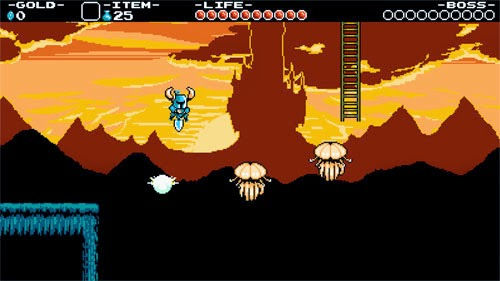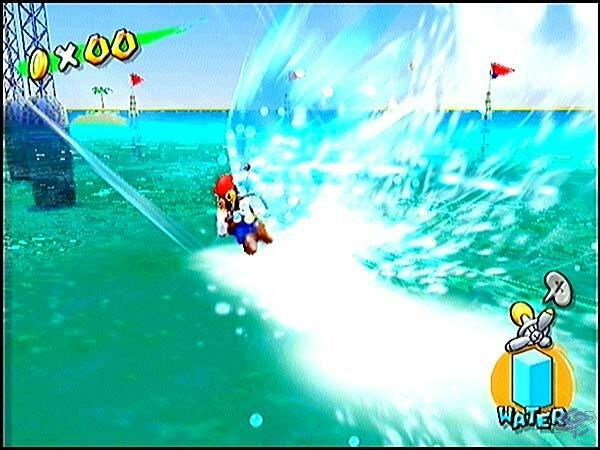Variety in the Platforming Genre
- Reed Priest
- Dec 14, 2018
- 6 min read
Updated: Dec 16, 2018
Among the wide genres of games, platformers offer the simple goal of moving from A to B. Despite this common theme, many platformers showcase a unique twist on gameplay to differentiate themselves from others. This variety keeps players both entertained and challenged. Although deceptively homogenous, the platforming genre exhibits copious gameplay diversity both across and within serieses to produce a fresh and valuable player experience.
Variety across platformers

Many different games enter the platforming genre by emphasising a special iteration that individuates its specific gameplay from other platformers. The wickedly challenging Celeste, for example, incorporates an unusual verticality to convey the protagonist's journey of climbing a mountain. While there are many horizontal transitions, verticality dominates Celeste’s overall progression. Each increase in level difficulty mirrors Celeste’s ascention up the mountain. While other platformers, such as Super Mario Bros. 2, incorporate verticality to diversify gameplay, few relate it to their central theme. Furthermore, Celeste separates itself from other platformers with its unforgiving difficulty. Death comes quickly, but gameplay seamlessly restarts to keep players engaged. With experience, the player can eventually manipulate the game’s mechanics to mellifluously and beautifly glide through levels. Such solidly satisfying gameplay would not be possible without Celeste’s harsh difficulty first temering the player. As a final and pivotal differentiation, Celeste conveys a powerful story of anxiety, depression, and self-acceptance. Most platformers never attempt such themes because they would prefer to solely focus on gameplay, yet Celeste’s effective and significant storytelling creates a mature and impactful game unlike any other.

As another distinct platformer, Hollow Knight frequently blends its platforming with combat to synthesize exhilarating gameplay. Some platforming series mostly incorporate minor combat, such as the Sonic franchise, while others commonly separate platforming from battling, occasionally seen in the Mega Man franchise. Hollow Knight’s individuality lies in its seamless pairing of combat and platforming. While fighting enemies, the player can jump around platforms for openings, dance around enemies to recover footing, or climb up ledges to escape. The Dark Souls series inspired Hollow Knight’s dynamic souls mechanic of recovering health from riskily damaging enemies, yet Dark Souls does not combine that battle mechanic with its world’s geography. Hollow Knight’s fluid union of combat and traversal offers new potentials to Metroidvania platformers and separates itself from others in the genre.

While Hollow Knight blends two major game components of platforming and combat, Shovel Knight remains distinct due to its homage to copious other platforming franchises’ mechanics. An an endearing loveletter the ageless classics, Shovel Knight honors many iconic games by incorporating their elements with slight variations. Similarly to Mario, Shovel Knight’s main objective is to save his crush from an evil enemy. Reminiscent of Scrooge’s cane attack in DuckTales, Shovel Knight’s most frequently used attack is a downward aerial strike. As in Mega Man games, each level in Shovel Knight ends with an epic boss battle built upon a unique gameplay mechanic. These lovingly integrated elements do not intend to merely copy or rob previous games, but to honor them with a fun variation. With so many of these references, Shovel Knight becomes an idiosyncratic amalgamation of platforming’s highlights.

Donkey Kong Country: Tropical Freeze differs from other platformers with its exquisite level depth. Not only does each level differ both thematically and mechanically, but through its combination of both. One level, for instance, is based on an African safari where the player journeys across a gorgeous savanna by sliding along smiling animal puppets and climbing up dancing Baobab trees. In addition to the African-inspired music, the Africa-themed level design creates a novel setting that urges the player to fully experience its secrets. Furthermore, its integration of such scenery with gameplay makes the player more directly embrace the intended Africa motif. Instead of just looking at the savanna, players participate in it through gameplay. All of the stages in Tropic Freeze also boast a sense of realism. Many platformers do not instill a sense of logic behind their level design; their oddly floating platforms are often added, yet not explained. Tropical Freeze, however, incorporates an elaborate system in the background to justify such floating platforms. Pulleys and levers hoist platforms in the air while ropes tether them together, a lumber factory zanily shreds trees to create upcoming wooden platforms, and a volcanic eruption intensifies one level’s dynamics by igniting necessary platforms. Although obtuse, these justifications add a sense of realism that is rare among platformers. These examples highlight some of the creative distinctions across platformers, and how such differences craft an entertaining derivation on the tried and true platforming formula.
Variety within platformers

As a leading contributor to the “all platformers are alike” argument, Mario games have endured a fair amount of gameplay homogeneity. Many titles distributed the same Mario formula, such as New Super Mario Bros., New Super Mario Bros. Wii, New Super Mario Bros. Wii U, etc. Other titles offered slight iterations that propelled their platforming, including New Super Luigi U with added difficulty, New Super Mario Bros. 2 with its emphasis on coins, and Super Mario Run with its mobile platform. Despite its history of platforming homogeneity, the Mario series also demonstrates the rich diversity of gameplay possibilities within a platforming franchise.

Everything changed in Super Mario World with the introduction of Yoshi. This adorable sidekick expands gameplay potentials through his extra hit, eating mechanic, and koopa-specific power-ups. As Mario’s helpful dinosaur friend, Yoshi provides an extra hit when mario takes damage, resulting in Yoshi running away; however, the player can get Yoshi back by once again jumping on him. Not only does this action embrace Mario’s core mechanic of platforming through precision jumping, but it introduces an exciting rush in the player to reclaim their friend. Yoshi also aids gameplay by eating smaller enemies and either swallowing them for an eventual 1-up or spitting them out to defeat more enemies. These gameplay options enable the player to manipulate Yoshi’s powers for the given situation’s need. Finally, Yoshi can eat several different koopas, differentiated by their shell colors, to further vary gameplay. Red shells produces flames to defeat enemies, yellow shells result in a ground pound, blue shells result in flight abilities, sparkly shells result in all of the aforementioned powers, and green shells result in a spitable projectile. From these gameplay additions, Yoshi empowers the player and separates Super Mario World from the other 2D Mario platforming games.

Taking Super Mario 64’s emphasis on movement possibilities, Super Mario Sunshine’s addition of F.L.U.D.D. greatly expanded platforming potential. Due to this water-powered jetpack, mario can cover extreme vertical distance with the Rocket Nozzle, swaths of horizontal distance with the Turbo Nozzle, and precision platforming with the Hover Nozzle. With F.L.U.D.D.’s powers, platforming became could implement more verticality due to rocket blasts of water, isolated platforming levels could be more quickly completed by hovering, and enemies could now be fought in a new system of spraying water. With the introduction of F.L.U.D.D., Super Mario Sunshine’s platforming distinguished itself from other Mario titles with its open-ended variety.

Super Mario Galaxy and Super Mario Galaxy 2 similarly exhibit how a core game mechanic can shape the player’s entire experience. The Galaxy games’ iconic gravity mechanic introduced a new, planetary-based type of platforming. Instead of merely progressing from left to right, Mario could travel around a planet to zoom to another planetoid to swing to another planet to ultimately blast to a boss. The perfect size of these planets made them ideal for dissection. Open planet games are often too vast for the player to remember every detail and location without a map, yet the Galaxy games’ planet sizes are not too big to confuse or too small to bore the player. Power-ups also cater to the overall gravity mechanic. The Cloud Shroom in Galaxy 2, for example, enables the player to platform across two seemingly disparate parts of a level. Additionally, Mario does not fall down the classic pits of death; instead, a misstep results in Mario being drawn into a black hole. This difference creates realism in the level design while also differentiating the Galaxy games from the others in the Mario series. Mario’s spin jump also offers a height boost to platforming that fits the games’ integration of verticality. From their ingeniously incorporated gravity-based mechanics, the Galaxy games propelled platforming into new and creative spaces differently than any others in the Mario series.
Conclusion
As a whole, the platforming genre appears seemingly homogeneous because of the everpresent directive to move from one point to another. Upon a deeper analysis, however, the critical eye can uncover valuable nuances across serieses in addition to differentiations within a given series. The vast variety among these games garner distinct player experiences that elevate each games’ playthrough. Even though platforming is not a new game genre, designers continually find novel methods to individuate their games while bestowing the player with the age-old enjoyment of traversing a rich and detailed level.



Comments